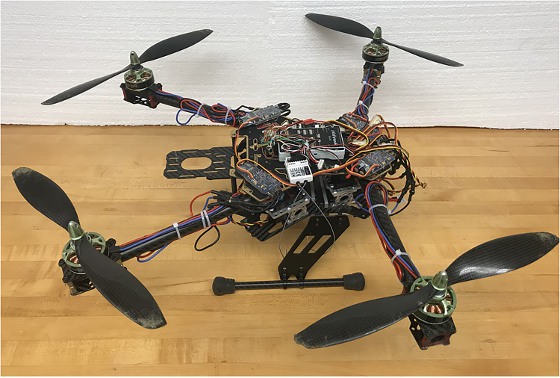 |
| April 23, 2019 | Volume 15 Issue 16 |
Designfax weekly eMagazine
Archives
Partners
Manufacturing Center
Product Spotlight
Modern Applications News
Metalworking Ideas For
Today's Job Shops
Tooling and Production
Strategies for large
metalworking plants
Better drone-arm design inspired by insects
By Chris Adam, Purdue University
A drone delivery is great -- on a perfect, sunny day. But what about when it's windy? Most drones are not able to withstand wind because of their fixed-arm design.
A Purdue University researcher has come up with a patented design for drones, or unmanned aerial vehicles, that works in windy conditions, is more energy efficient, and can handle a larger payload.

A Purdue University researcher has come up with a patented design for unmanned aerial vehicles that works in windy conditions.
"Our drone design was inspired by the wings and flight patterns of insects," said Xiumin Diao, an assistant professor in Purdue's School of Engineering Technology. "We created a drone design with automatic folding arms that can make in-flight adjustments."
Diao said the design provides drones with improved stability in windy conditions because the folding arms can move and change the center of gravity of the device during flight. He said the design also makes drones more energy efficient because the movable-arm technology allows for the use of the full range of rotor thrust. The technology is published in the ASME Journal of Dynamic Systems, Measurement and Control.
"The drones on the market now have fixed arms, and that greatly reduces their maximum payload capacity when the payload is offset [by] their center of gravity," Diao said. "Our design allows a larger payload because the movable arms can liberate part of [the] rotor thrust to fight the weight on the overall device."
Also, according to Diao's paper, "It is shown with simulation that an example quadrotor with rotatable arms can save up to 13 percent of energy."
Diao said the foldable arms also can help in search-and-rescue operations using drones, because they can more effectively navigate the air conditions in ravaged areas and morph by moving the arms to go through narrow spaces.
A record of more than $700 million was invested in the drone industry in 2018 as military, government, and consumer markets saw increased demand.
Diao worked with the Purdue Office of Technology Commercialization to patent his device. They are looking for additional researchers and partners to license the technology.
Published April 2019
Rate this article
View our terms of use and privacy policy
